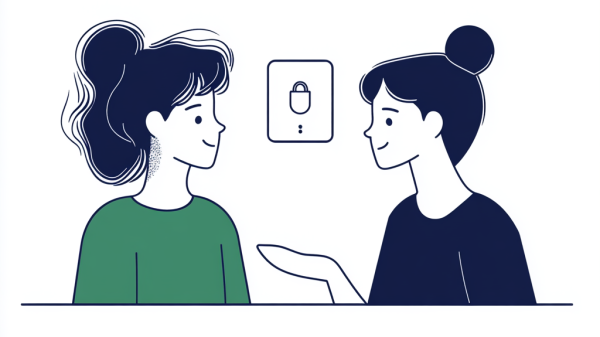The APP fraud epidemic: what needs to change
A recent parliamentary report on Authorised Push Payment fraud paints a sobering picture of a problem that has grown from a concern to a full-blown crisis. At £3 billion annually, APP fraud now represents one of the most significant financial threats facing UK consumers—yet our collective response remains inadequate, fragmented, and ultimately ineffective.
The accountability gap
Perhaps the most striking aspect of our current approach to APP fraud is the fundamental imbalance in accountability. Banks and payment service providers bear the financial burden of reimbursing victims, yet they have limited control over where the fraud originates. The data is clear: 54% of all scams start on social media platforms, with Meta’s ecosystem (Facebook, Instagram, and WhatsApp) accounting for a substantial portion.
These platforms create the fertile ground where fraudsters identify, target, and manipulate victims, yet they contribute nothing toward reimbursement costs. This creates a perverse incentive structure where the very companies best positioned to prevent fraud at its source have the least financial motivation to do so.
The detection problem is worsening
Despite billions invested in anti-fraud technology, banks are actually becoming less effective at spotting ongoing fraud. The parliamentary report reveals a troubling statistic: the average number of payments made per fraud case has increased from 1.6 in 2020 to 1.8 in 2024. For romance scams, this figure has nearly doubled from 5.5 payments to 10.8.
This suggests that despite sophisticated transaction monitoring systems, machine learning algorithms, and behavioural analytics, fraudsters are staying one step ahead. More concerning still, it means victims remain under the psychological control of scammers for longer periods, deepening both the financial and emotional damage.
The reimbursement regime needs reform
The October 2024 mandatory reimbursement requirement represents progress, but early evidence suggests implementation has been problematic. Some institutions appear to be adopting a policy-based approach of rejecting legitimate claims from the outset, forcing victims into prolonged appeals processes.
The reduction of the maximum reimbursement amount from £415,000 to £85,000 after banking industry lobbying has also created a significant protection gap for victims of high-value frauds—particularly devastating for those who lose life-changing sums through property transactions or pension transfers.
A better approach would include:
1. Shared responsibility across the entire ecosystem
We need a model where all participants in the fraud ecosystem—banks, social media platforms, telecommunications companies, and cryptocurrency exchanges—contribute to both prevention and reimbursement. The parliamentary report’s recommendation that social media companies contribute to the Economic Crime Levy is a start, but doesn’t go far enough.
2. Focused, effective warnings
The current approach of bombarding customers with generic fraud warnings is counterproductive. These warnings become background noise, easily ignored and ultimately useless. Banks need to develop targeted, transaction-specific alerts that cut through the noise and prompt genuine reflection.
3. Real-time fraud intelligence sharing
The financial industry has made progress with initiatives like the Fraud Intelligence Reciprocal Exchange (FIRE), but these efforts remain fragmented and reactive. We need a comprehensive, real-time intelligence sharing platform that connects financial institutions, social media companies, telecommunications providers, and law enforcement.
4. Regulatory alignment and enforcement
The disconnect between different regulatory regimes—the PSR’s mandatory reimbursement requirements versus the Financial Ombudsman Service’s approach—creates confusion and delays for victims. A unified approach with clear, enforced timelines would significantly improve outcomes.
5. Investment in education
Prevention remains the best cure. Greater investment in targeted education about emerging scam types, delivered at the point of greatest vulnerability, could significantly reduce victimisation rates.
The human cost cannot be ignored
Behind every statistic is a person whose life has often been devastated. The parliamentary report correctly identifies the psychological impact of APP fraud as comparable to domestic abuse in some cases, with victims experiencing manipulation, control, isolation, and profound shame.
The financial impact of APP fraud may be £3 billion annually, but the human cost—in damaged mental health, broken relationships, and lost trust in financial systems—is incalculable.
A watershed moment
The parliamentary report represents a watershed moment in our understanding of APP fraud. It exposes the true scale of the problem and highlights significant shortcomings in our current approach.
The question now is whether we have the collective will to implement meaningful change—to create a system where responsibility is shared appropriately, prevention is prioritised alongside reimbursement, and victims receive the support they deserve.
If we continue with our current fragmented approach, the £3 billion annual fraud bill will only grow larger, leaving more victims in its wake. The time for bold, coordinated action is now.
This article represents the expert opinion of APP Claims, specialists in helping victims of APP fraud recover their money when banks refuse reimbursement. Our front-line experience with thousands of fraud cases gives us unique insight into the challenges victims face and the systemic improvements needed.








